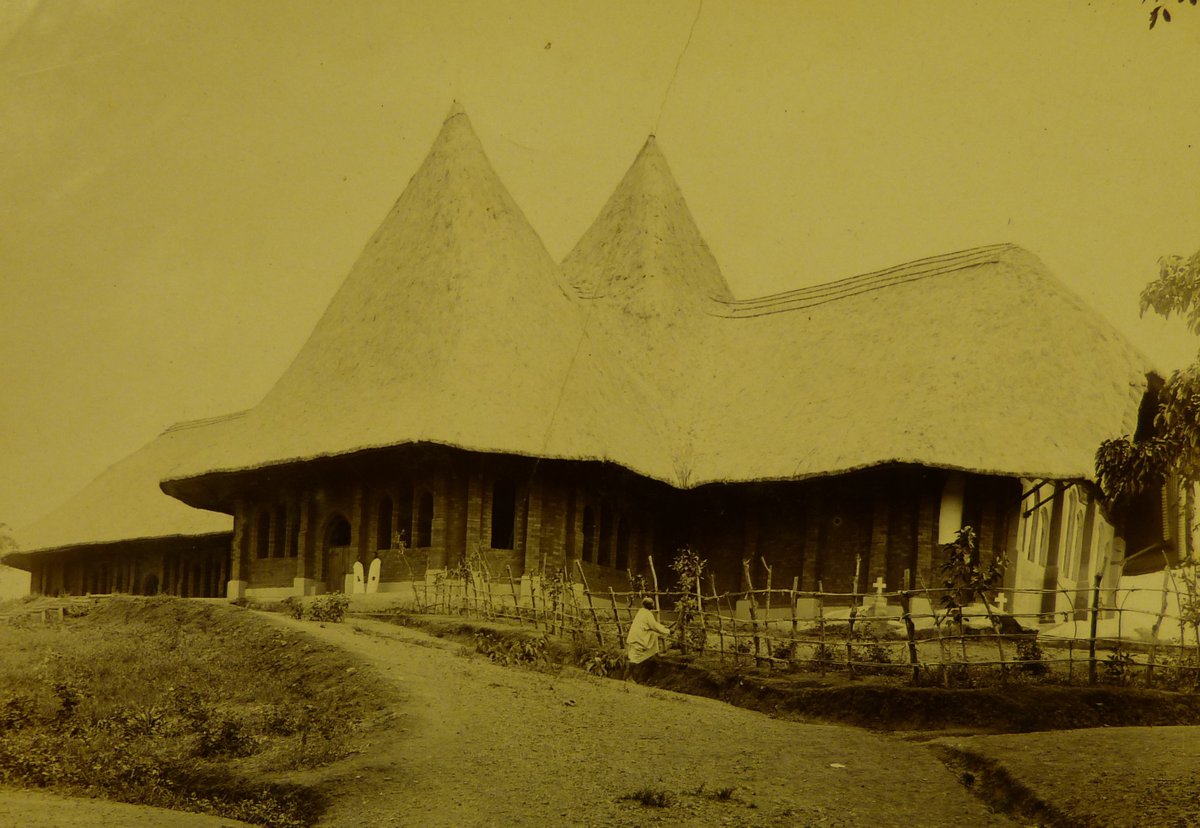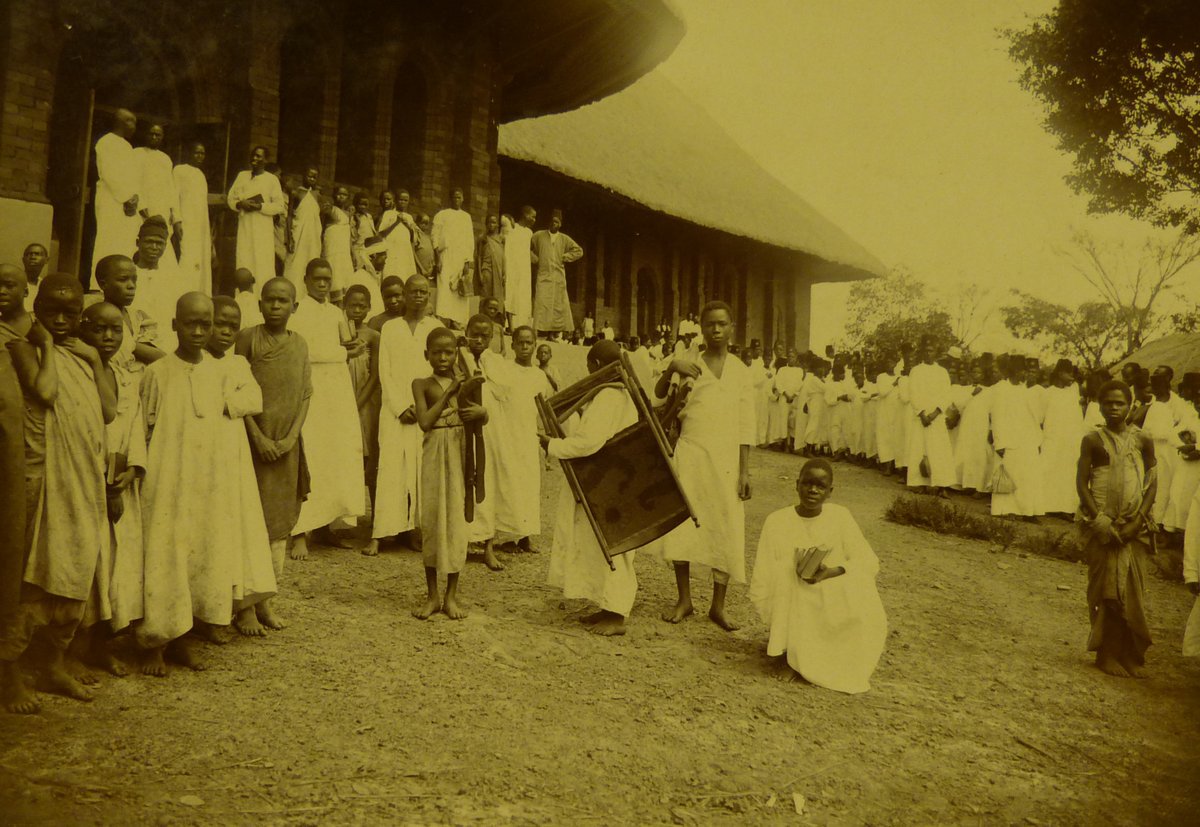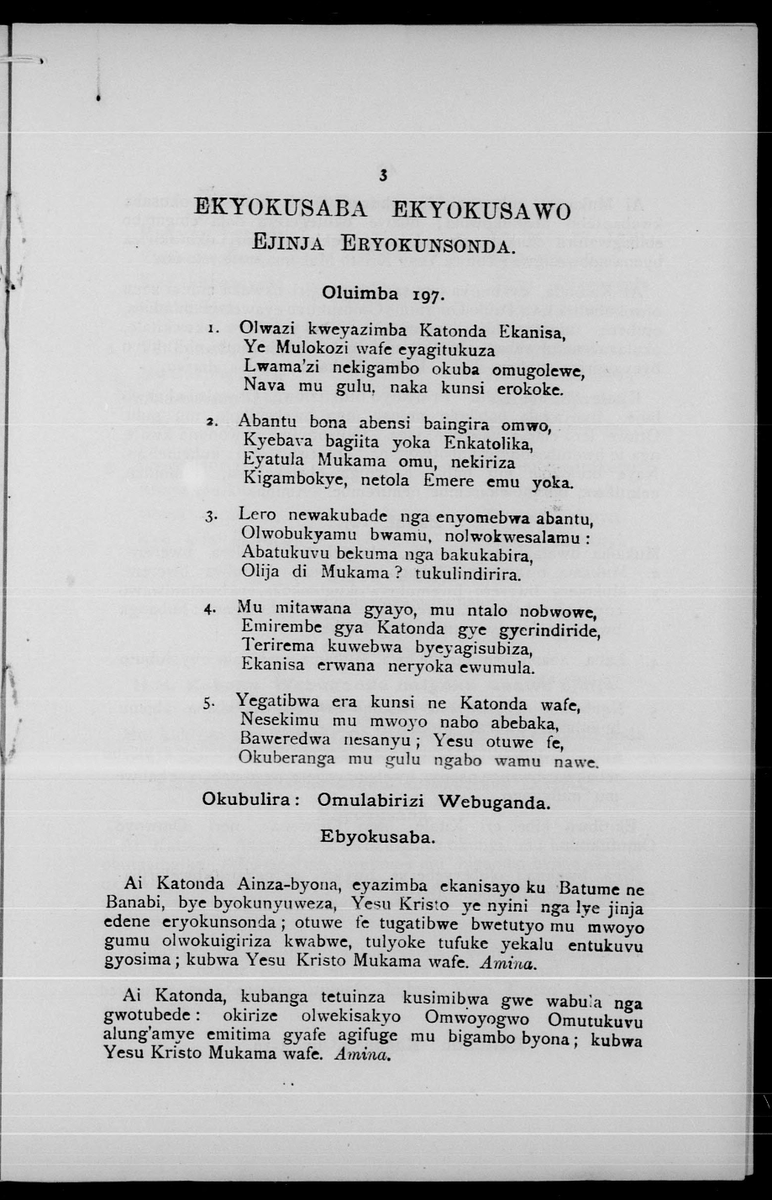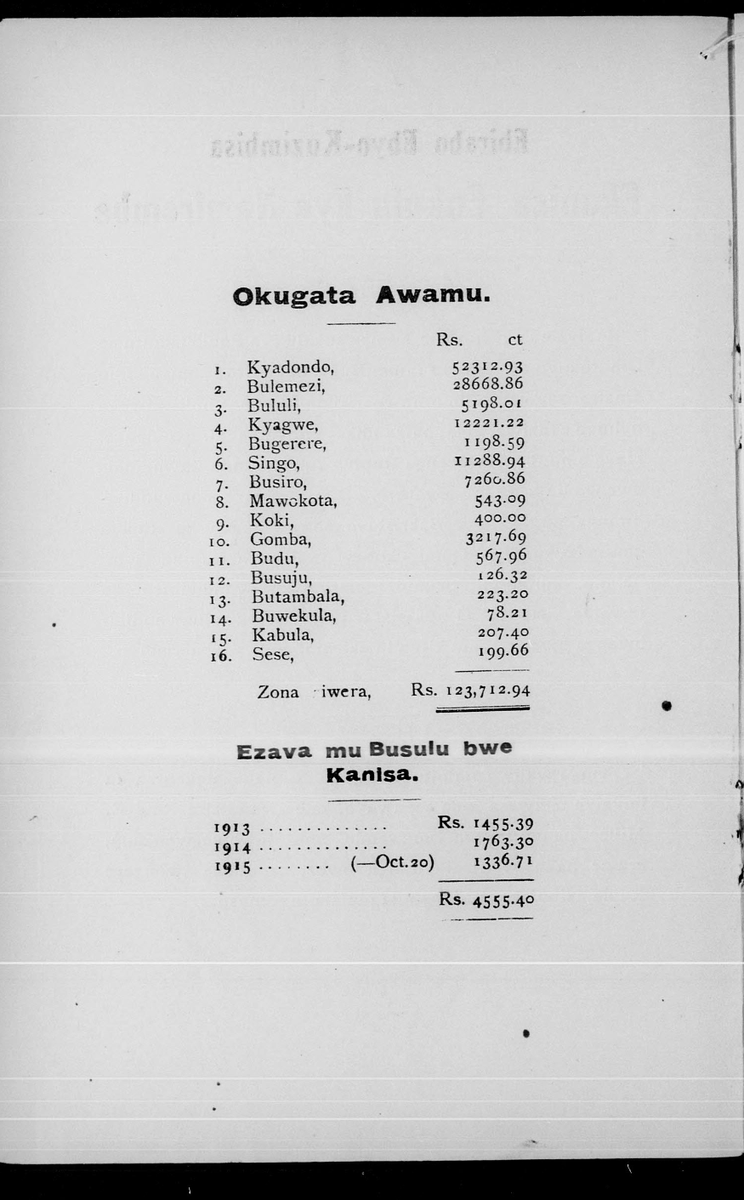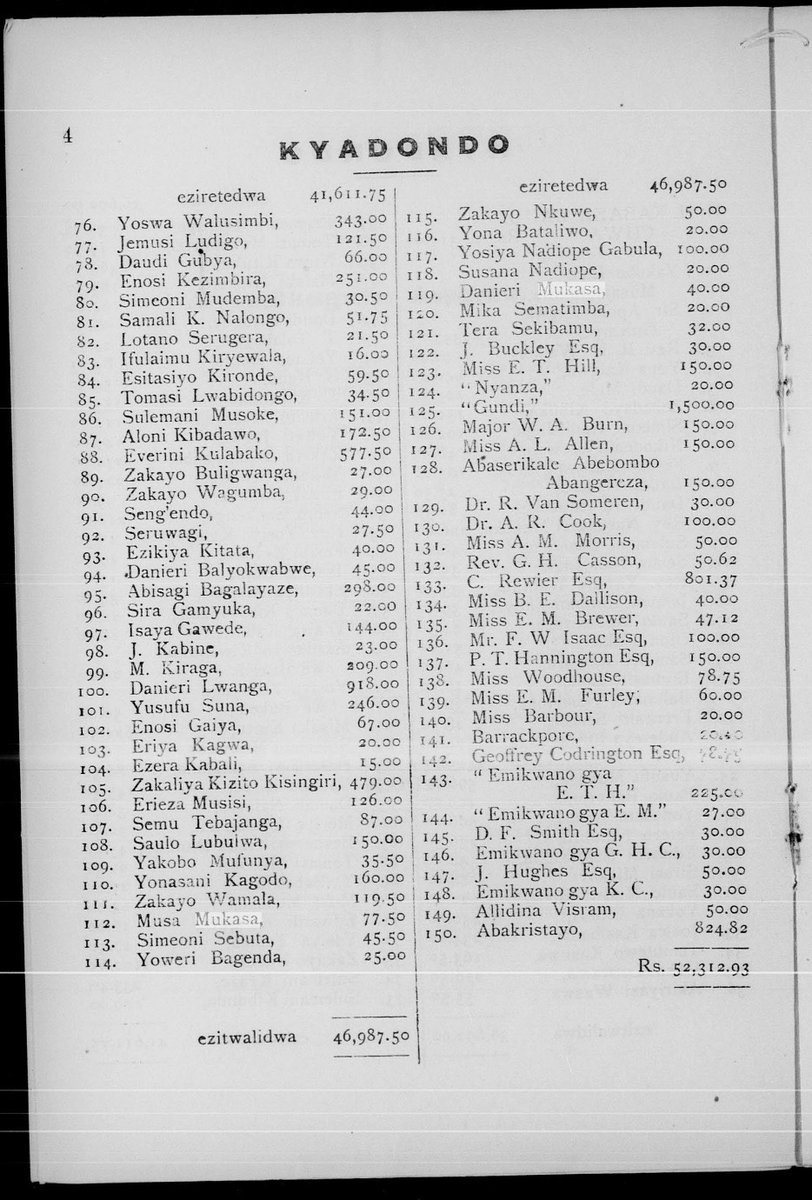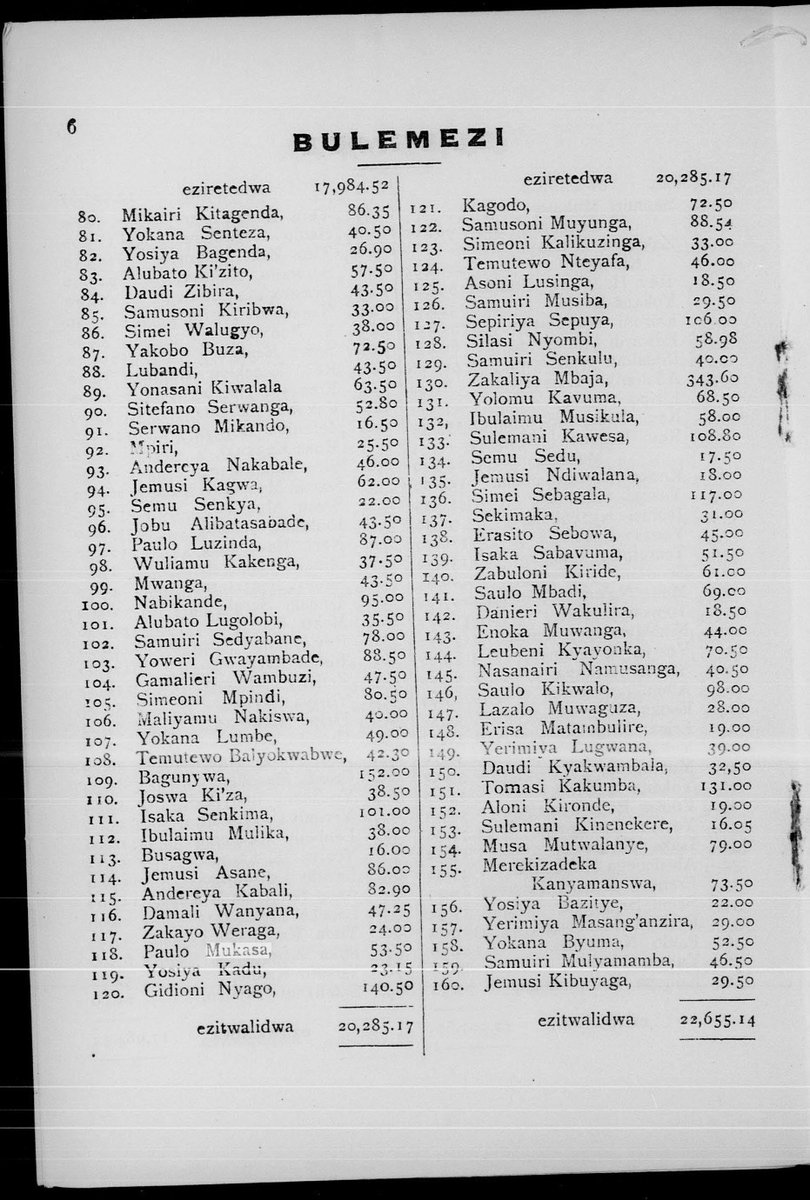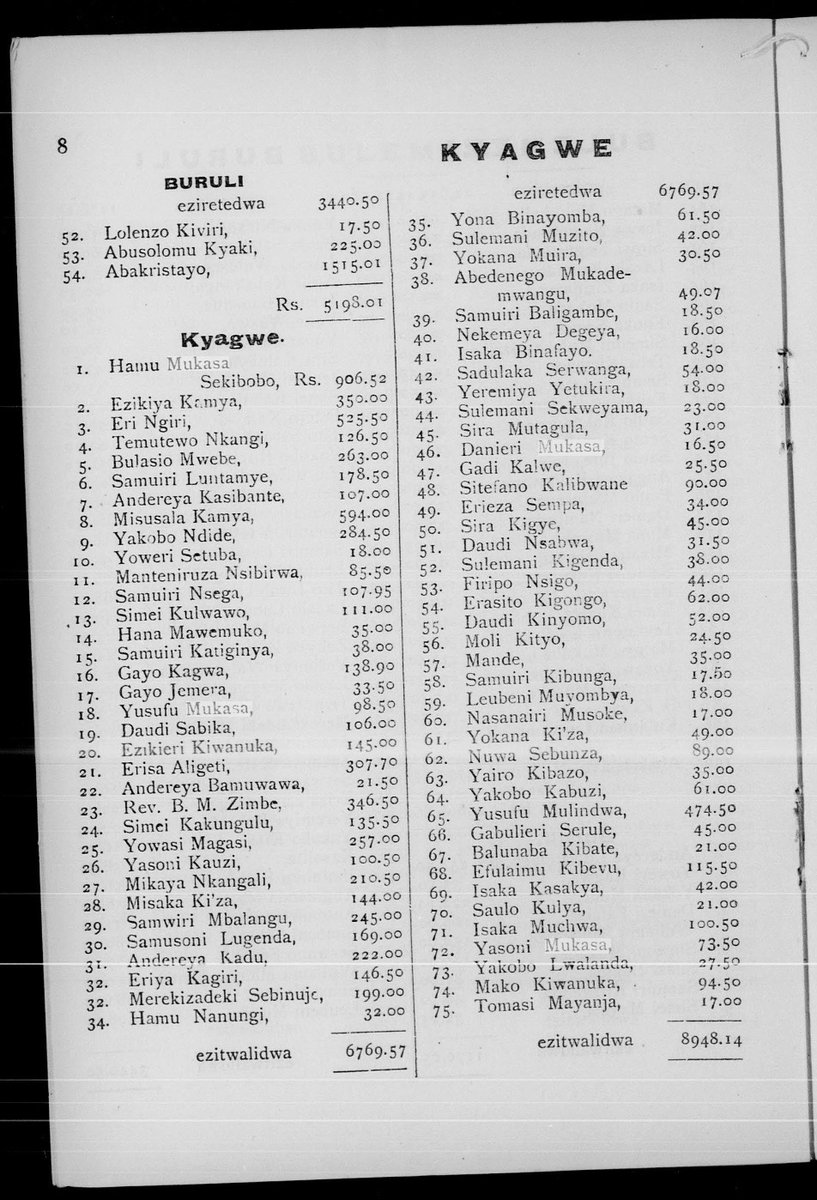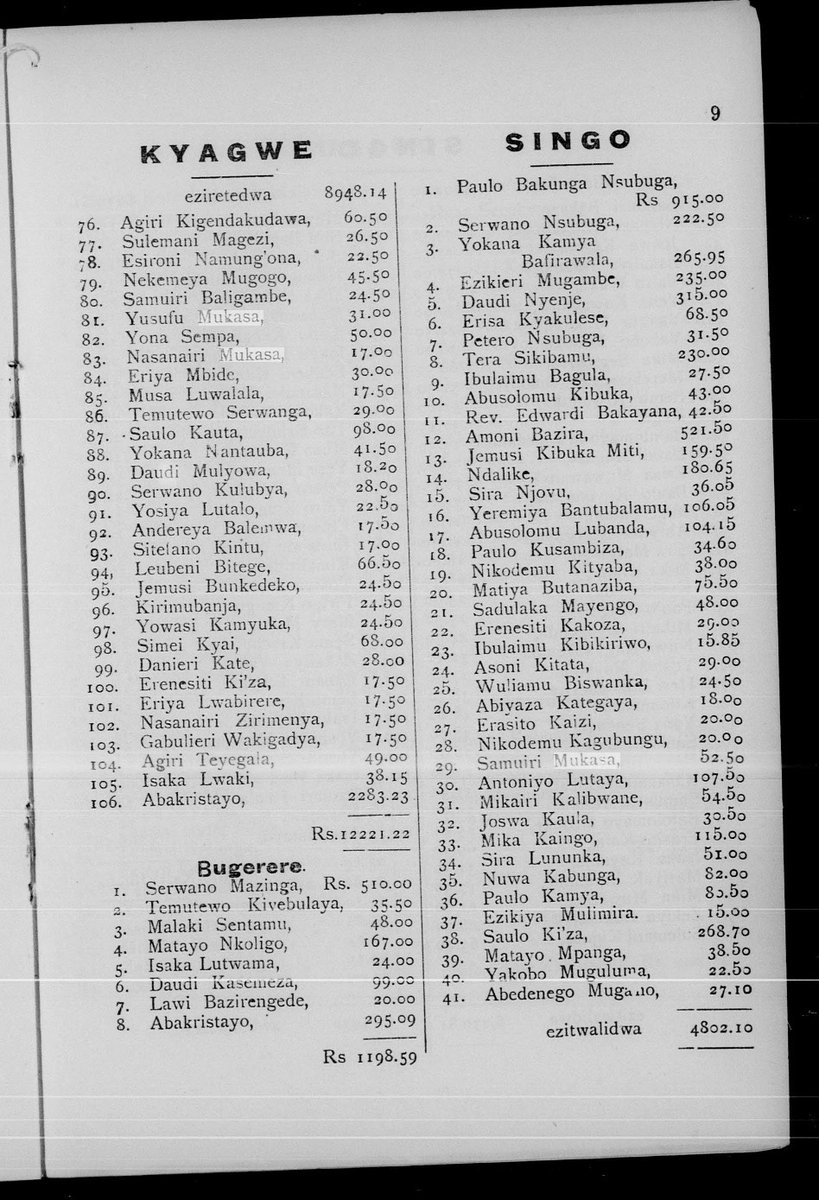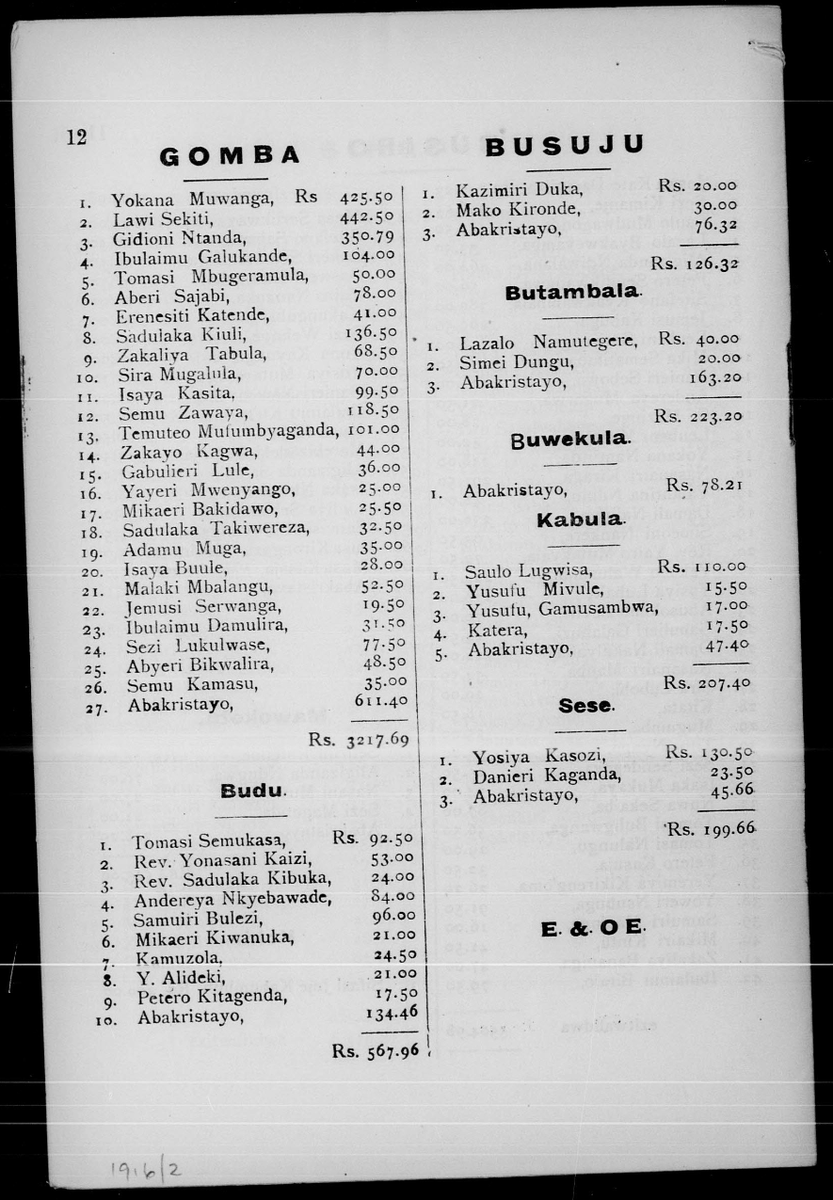Namirembe Cathedral has a long, complicated history. In 1891, a cathedral was constructed to accommodate 5,000. That cathedral collapsed. A second cathedral was created, and eventually torn down due to rot. A third cathedral was built, then destroyed by fire. 1/11
The cornerstone of today’s cathedral was laid in 1915. There has been much debate about the deep meaning of “Namirembe.” And I’d love to hear your thoughts. Hamu Mukasa argued that its meaning came from “mulembe,” which referred to a period, era or historical moment. 2/11
In Simuda Nyuma, he suggested, ‘things come and go’ (emirembe ngalo), literally, ‘generations are fingers’. For Mukasa, this was one way to talk about a new type of political power structured around the architecture of the Church of Uganda. 3/11
At the heart of stabilizing Buganda after the religious wars was a cathedral. When the time came to lay a cornerstone, Protestant chiefs and Christians competed to raise the most amount of money. It’s a long story, but 1915 also followed a time when there was much 4/11
debate over what crosses should look like. Converts were deeply worried about efforts made by European missionaries to redesign the crosses. For Ganda Protestants, there was much at stake in ensuring that local communities controlled the 5/11
Cathedral—not European missionaries. What you see here is a registry of who gave toward the building of St. Paul’s, organized by county. Notice how much Kabaka Chwa offered! This was right about his coming of political age. 6/11
Buganda’s monarch showed that he was clearly in command of colonial Protestantism. 7/11
***If you are having trouble viewing the images, please try here: https://www.jonathonearle.com/ekyokusaba-8-november-1915

 Read on Twitter
Read on Twitter